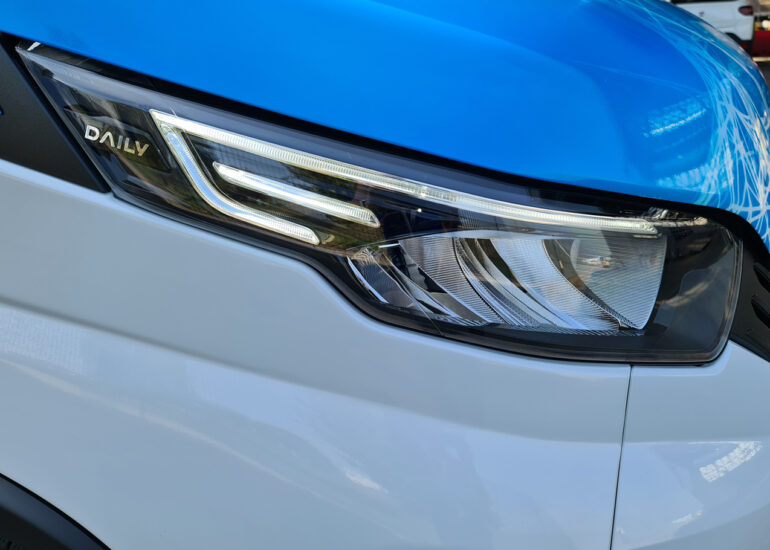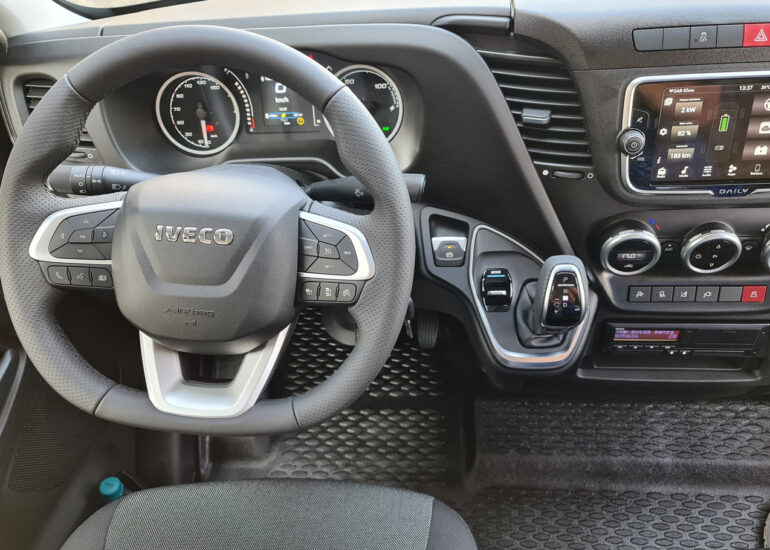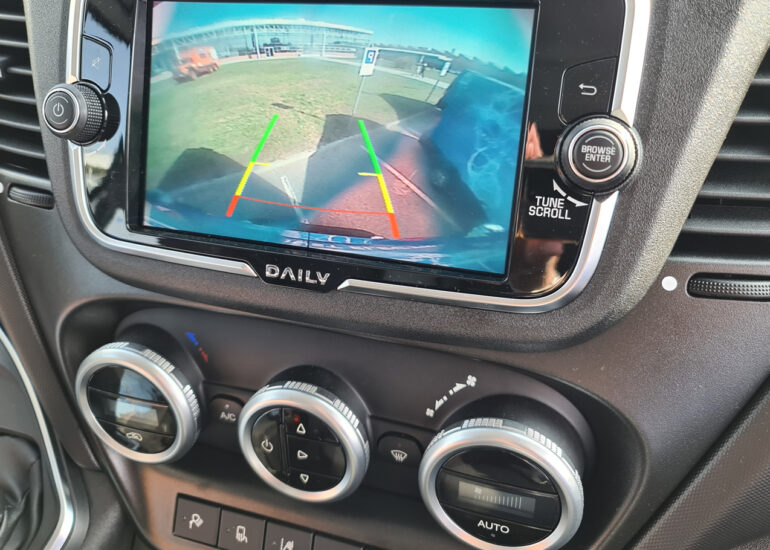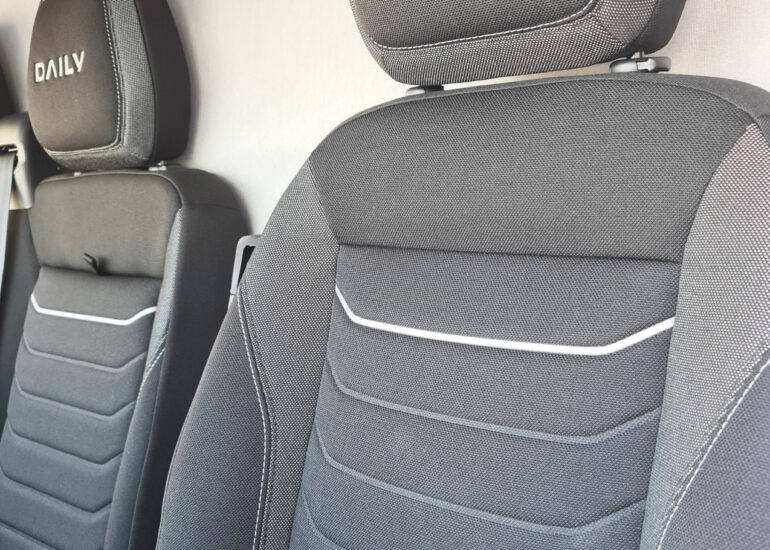Iveco’s sustainability journey unpacked
Iveco’s sustainability journey unpacked
Iveco has pledged to offer a full range of sustainable transport solutions for every customer while reaching net zero carbon by 2040. These are lofty goals. And, as CHARLEEN CLARKE discovers during a trip to Turin, the company is adopting a multi-faceted approach to achieve these aspirations.
One of the most obvious ways of bolstering sustainability is by launching new “green” products – and Iveco is doing this by the truckload across the full transport spectrum.
eDaily: The same Daily you’re used to, just electric
One of the most significant new products is the eDaily, which was shown to the world for the first time at the IAA Transportation exhibition in Hannover earlier this year. Although we’re going to need to wait a while before seeing it on South African roads, Elvis Mutseura, product marketing manager at Iveco SA, says the local company is actively engaging with Italy on this topic. “We have had the opportunity to showcase this technology to some customers, who we managed to take to Italy this year. We will definitely be bringing some demonstrator units to South Africa, though this is only likely to happen towards the end of 2023 or early 2024,” he reveals.
Meanwhile, Europeans are already placing orders for the eDaily, and deliveries are expected to start early next year. Incredibly, the Petit Forestier Group – a European leader in refrigerated vehicle and container rental – ordered 2 000 eDaily chassis cabs for its rental fleet during the IAA.
Why the massive order? Well, we have driven the eDaily and we can fully understand Petit Forestier’s enthusiasm. It’s a sensational – and extremely versatile – vehicle. During our press visit to Turin, the Iveco team was at pains to point out that the eDaily is “the same Daily you’re used to, just electric”. We assume that this is to comfort operators who may be apprehensive about going the e-mobility route. The Daily, of course, has an excellent reputation all over the globe – and deservedly so. The strategy, therefore, makes a lot of sense.
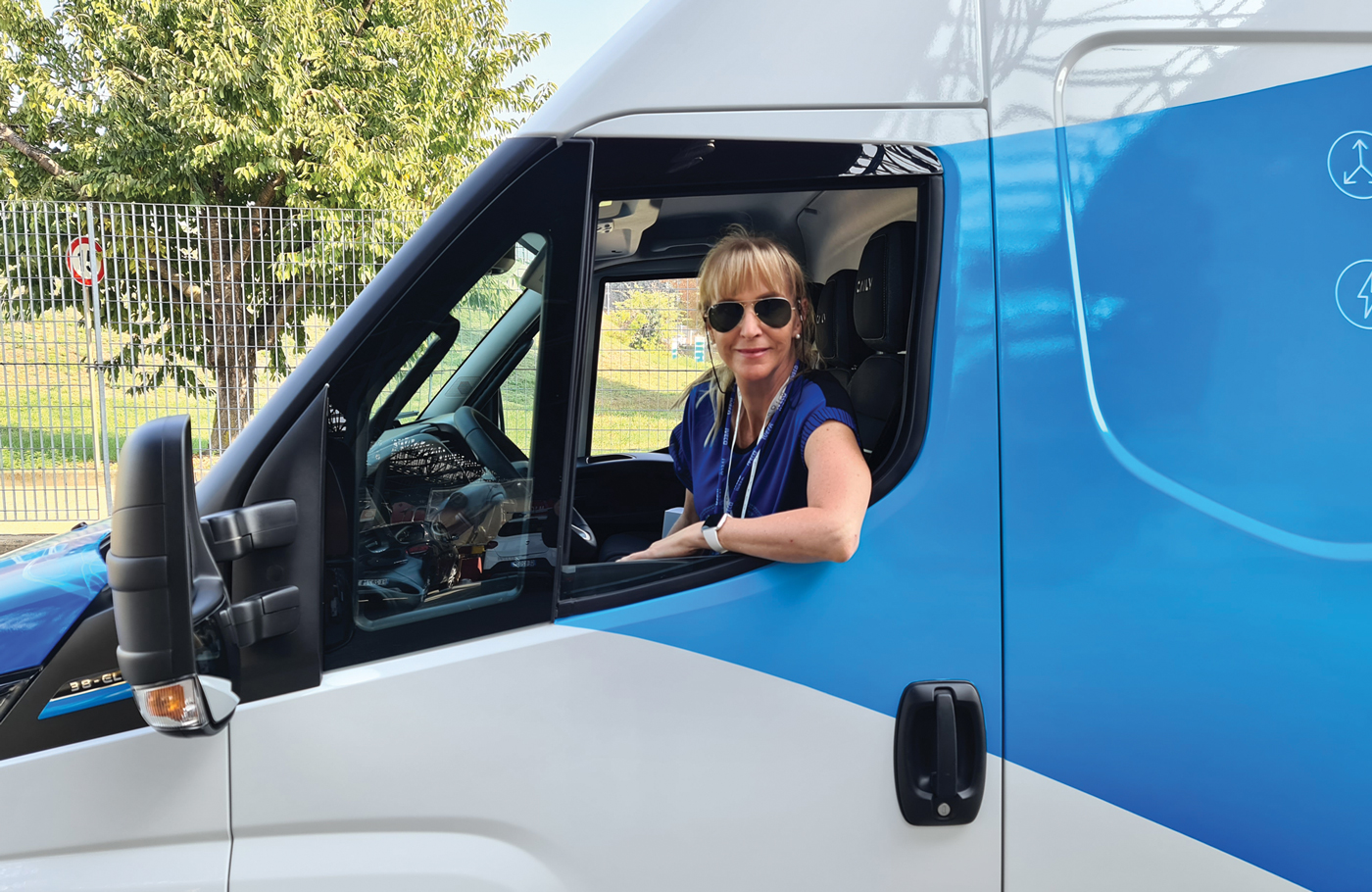
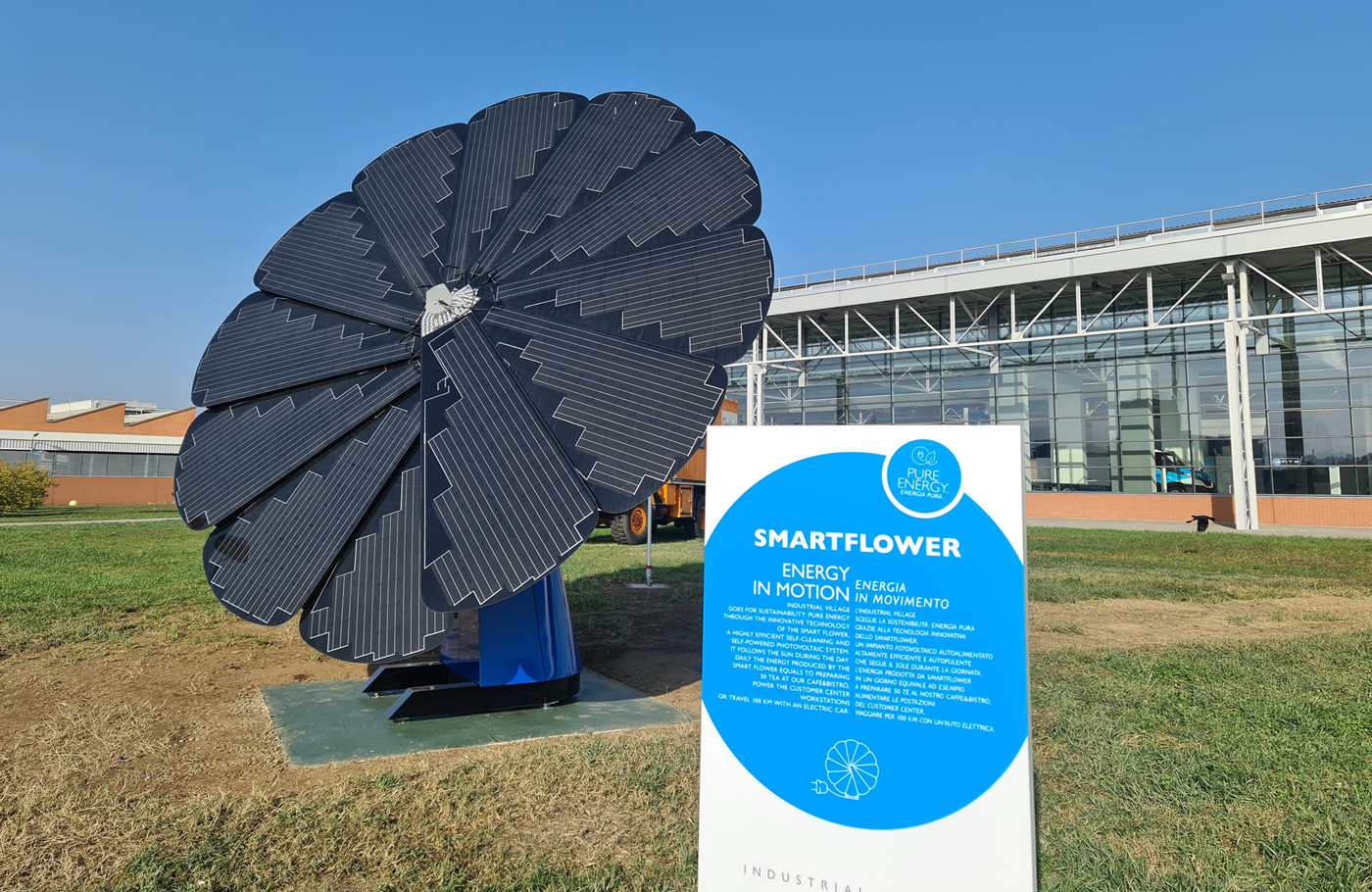
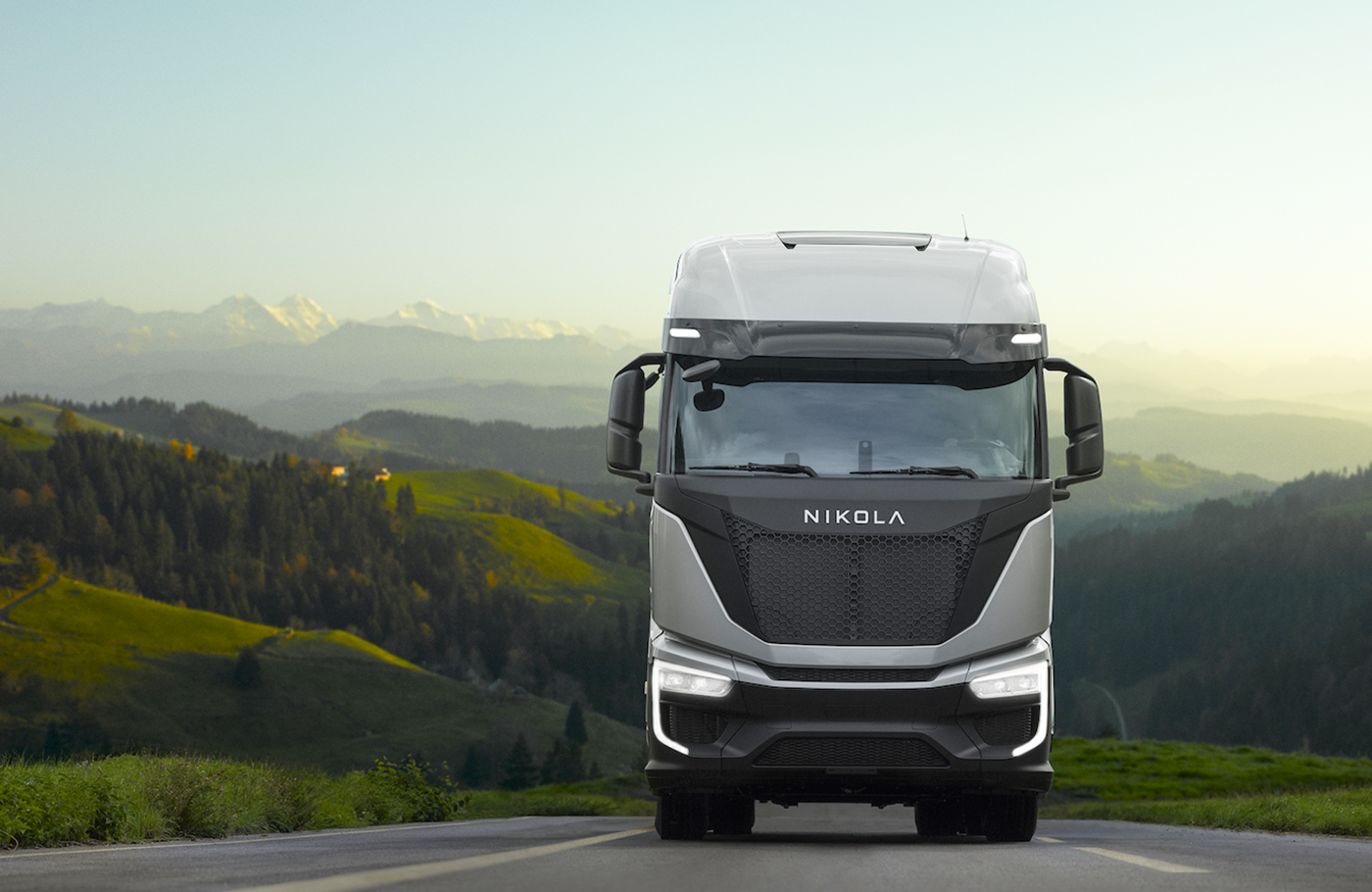
Above: The new eDaily is fabulous to drive, as Charleen Clarke discovered during her visit to Turin; The Smartflower, located at the Iveco Industrial Village, is one of many environmental initiatives; Although the Nikola Tre is destined for European roads from next year (in BEV guise), South African transport operators will need to wait a while.
From a driver’s perspective, it is very easy to adjust to driving the eDaily. It looks like a regular Daily, with the exception of the charging port, which is cleverly embedded in the nose of the vehicle (I really like this solution, as it doesn’t matter whether the charger is located to the vehicle’s left or right – either way, you still have great access).
Then there is the actual driving experience. Well, this is quite different to a Daily powered by an internal combustion engine. Of course, you have no noise, which is great. But there are lots of other benefits too. It’s far quicker off the mark than a diesel-powered Daily, thanks to the eDaily’s incredible low-down torque. Acceleration is also far smoother, with up to 140 kW max power and 400 Nm of peak torque on tap.
There are various gadgets and switches with which to become accustomed. For instance, there are three driving modes: Eco, Natural, and Power. While “Natural” could best be described as the closest to regular driving, the other modes deliver exactly what their names promise: either better economy (only 80% of the power is available) or more power. There’s also a Hi-Power mode, which comes in handy when overtaking.
The other frequently used switch controls energy recuperation. Once again, there are three modes: Standard Regenerative, One-Pedal Drive, and Sailing. One-Pedal Drive is obviously the way to go. However, it takes a bit of getting used to (as soon as you tap off the accelerator, the eDaily slows down). I drove mainly in Standard Regenerative, but if I was a professional driver behind the wheel of an eDaily all the time, I think I would quickly move over to One-Pedal Drive.
Another “gadget” of sorts that’s well worth a mention is the optional Air-Pro intelligent pneumatic suspension, which offers 25% vibration reduction. This transforms what’s already a good ride into a great ride.
The “electric twin” of the iconic Daily offers the full range with all body variants – van, cab, and minibus, from 3.5 to 7.2 tonnes. It maintains the Daily’s celebrated signature features and includes a 37 kWh fully modular battery set that allows range optimisation and makes the eDaily adaptable to all missions.
The new eDaily also breaks new ground by introducing electric vehicles in the conversion business with the game-changing opportunity to install different types of ePTOs up to 15 kW. This means that it can power refrigeration units, cranes, and other superstructures – even the most demanding ones such as waste collection and aerial platforms. We can’t wait to see it in South Africa.
Nikola Tre: deliveries next year
At the opposite end of the commercial vehicle scale, we were also invited to a meeting hosted exclusively for members of the International Truck of the Year jury. We were given details of Iveco’s new heavy truck range (I’m not allowed to reveal one single word about this), as well as a fascinating insight into Iveco’s future product plans when it comes to alternative propulsion. Battery-electric vehicles (BEVs) and fuel cell electric vehicles (FCEV) will obviously form an important part of those plans.
Thanks to its partnership with Nikola, the company is ready to roll out BEVs in Europe next year. We will get Nikola trucks here in South Africa too, but certainly not next year. “We will not see Nikola very soon, unfortunately. It will come, but I cannot give you a timeline on that yet,” says Mutseura.
The European Nikola Tre BEV is produced by the Nikola Iveco Europe joint venture in its dedicated manufacturing plant in Ulm, Germany. The facility, inaugurated in 2021, features a final assembly process specifically designed for electric vehicles and operates to world-class manufacturing standards. Europeans are snapping up these trucks, which certainly look exceptional (we haven’t driven one yet, so we cannot relate any first-hand driving experiences).
Both the Nikola BEV 4×2 and the Nikola FCEV 6×2 are based on the Iveco S-Way, meaning they’re certainly the best-looking trucks on the road. Of course, looks aren’t that important in the transport game. So, what about the nuts and bolts of these trucks?
Well, senior Iveco execs revealed that the BEV will have a range of 530 km. The vehicle, which has a wheelbase of 4 021 mm, features nine batteries with total energy storage of up to 738 kWh. An 80% charge takes an estimated 100 minutes at 350 kW. With 480 kW continuous power of the FPT Industrial e-Axle, the truck has the power, torque, and range to perform applications such as hub-to-hub deliveries and regional hauling – and its mileage can be extended with opportunity charging. We are told that this performance comes with a low total cost of ownership, making it an operationally and financially viable zero-emission solution. The Nikola BEV 4×2 can transport a payload of up to 22.5 tonnes and has a kerb weight of 12 tonnes.
The FCEV (coming in 2024), on the other hand, will be able to do up to 800 km. It features a steering tag axle and a new cab with improved aerodynamic performance. With a wheelbase of 3 932 mm, it can accommodate approximately 70 usable kilograms of hydrogen at 700-bar pressure. This capacity, together with its fast-refuelling time of under 20 minutes, make it a compelling proposition. It can transport a payload of 24.7 tonnes and has a kerb weight of 11.8 tonnes.
More than new products
While the new products are most impressive, there is, of course, more to sustainability than just product launches. Iveco is ticking this “extras” box too.
For instance, the Iveco Industrial Village has a Smartflower. This device – an aesthetically beautiful yet efficient and innovative solar solution – is modelled on sunflowers, which open, close, and follow the sun for optimal energy conversion. That’s exactly what the Smartflower’s solar panels do: the Smartflower uses advanced robotics and automation to intelligently track the sun, producing up to 40% more energy than traditional stationary solar panels. In addition, every day at sunset, the Smartflower automatically folds up and even cleans itself to maintain peak solar utilisation.
The company is also a great supporter of recycling; the pens that we received during our press conference were once plastic bottles.
Furthermore, its manufacturing plants are going green. During our visit to Turin, we attended the opening of Iveco’s new ePowertrain plant, which is the world’s first carbon-neutral Iveco Group plant.
This is not the only “green” plant within the Iveco Group: its plants in Madrid and Valladolid have just been awarded the Lean & Green Star by the Association of Manufacturers and Distributors for reducing their carbon footprint. The two factories enrolled in the Lean and Green programme in 2016, when they initiated an Action Plan to reduce CO2emissions and minimise the impact of logistics processes on greenhouse gas emissions, with a commitment to cut their carbon footprint by 20% in five years. This has now been achieved.
As we said, the sustainability journey involves a lot more than just launching new products…
Published by
Charleen Clarke
focusmagsa

